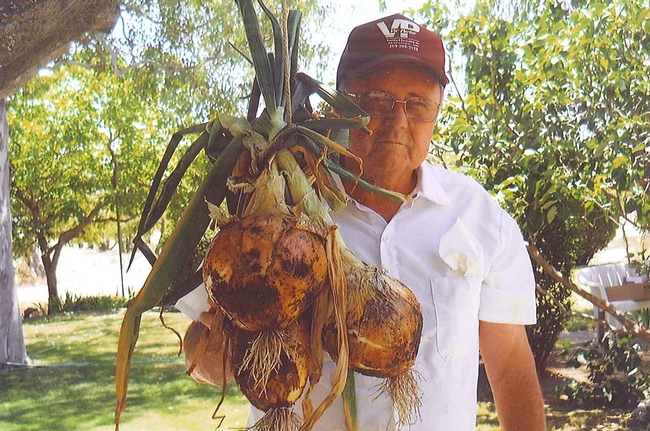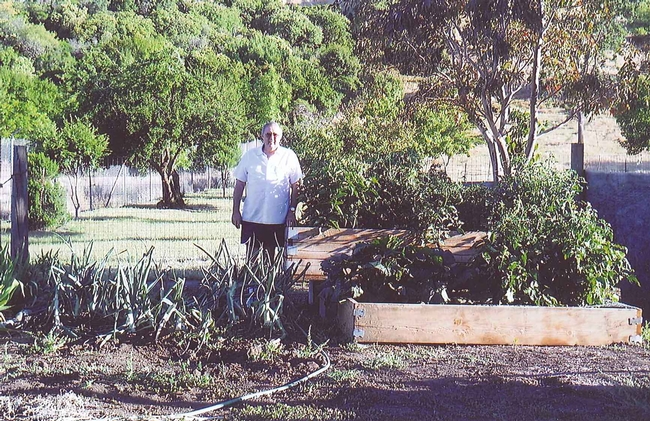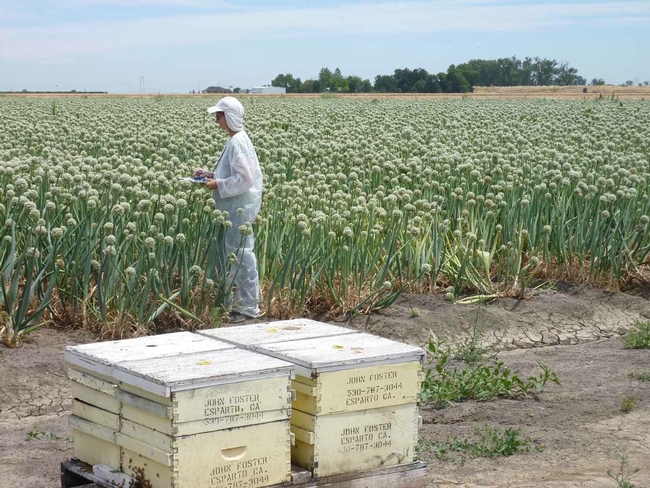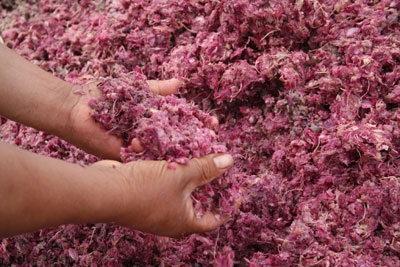Posts Tagged: onions
For the Love of Onions
Have you ever seen an onion so large that it looked like a melon? Our good friend, Evon, has mastered growing huge onions right here in Vacaville and has been doing this for 24 years. He appears at our front door in June or July, gifting us with the biggest onions ever! One onion will last us for weeks, often longer! He mails his onions to friends in New York, San Diego and Mexico, no small feat when they weigh up to 4 pounds each.
What is his secret? His onion sets are purchased in early November at a local nursery. He prefers the Stockton Red’s and yellow onions. They are planted deep and 8 inches apart, in a raised bed that has been filled with compost and steer manure. These amendments are rototilled together. The compost he uses is available from April 1st to October 1st at Vacaville landfill, (free, if you have Vacaville garbage service). When the top of the soil dries out, the onions need to be watered thoroughly. In about 8 months, the onion tops will fall over and at that point they are ready to pull from the soil and eat.
When our group of classmates get together to celebrate the 4th of July, the hot topic is Evon’s monstrous, trophy onions and what the biggest one weighed this year!

Evon and his onions. (photos by Sharon Rico)

Evon in the garden.
Lack of pollination due to insecticide use affects onion seed yields, study finds
A lack of pollination by honey bees — brought on by increased insecticide use to control onion thrips — was linked to a sharp decrease in yields of California onion seeds, according to research published in the July-September 2011 issue of the University of California’s California Agriculture journal.
“Honey bee visits to onion flowers were negatively correlated with the number of insecticides applied per field and field size,” wrote the study’s authors, Rachael F. Long of UC Cooperative Extension in Yolo County and Lora Morandin of the Department of Environmental Science, Policy and Management at UC Berkeley. “Reduced onion seed yields in recent years could be associated with the increase in insecticide use, which may be repelling or killing honey bees, important pollinators of this crop.”
The research was conducted in May and June 2009, in 13 commercial hybrid onion seed production fields in Yolo and Sacramento counties. At each of six sampling sites per field, the researchers observed the numbers and types of insects visiting onion flowers that were potential pollinators of onions. To assess onion seed yields relative to insect pollinator activity, they collected onion umbels from the sampling sites and counted the seeds to obtain average yield data. Ground mapping was done around each field to determine whether other preferred floral resources were available to honey bees, perhaps luring them away from onion flowers.
Onion thrips were previously of minor importance in onion seed production. However, iris yellow spot virus is a new pathogen for California onions that is vectored by onion thrips, and it can cause significant onion seed yield losses if left unmanaged. The insecticides used by growers at these field sites to control onion thrips included spinosad, spinetoram, methomyl, cypermethrin, lambda-cyhalothrin and sodium tetraborohydrate decahydrate. The number of insecticides applied per field ranged from one to seven, including tank mixes, with all pesticides applied prebloom. The number of bee hives per acre ranged from four to 14, with the exception of one field that had resident hives at 42 per acre.
“This study found that the number of insecticides applied and field size were the strongest predictors of honey bee activity and onion seed yields,” the authors wrote.
Long and Morandin cautioned that to confirm a causal relationship, more information is needed on the specific effects of different classes and rates of insecticides on honey bee activity. In addition, cultivar can play a role in honey bee activity and needs to be further investigated with respect to pesticide use and bee activity.
“Our study suggests that growers should exercise caution when using insecticides, applying them only when needed as opposed to preemptively, to better protect both wild and honey bee pollinators,” the authors wrote. “Also, the negative correlation between field size and honey bee activity suggests that spreading honey bee colonies around onion fields rather than grouping them may increase honey bee activity and pollination in larger fields.”
Onion seed is primarily grown in Colusa County and the Imperial Valley on about 2,000 acres. The value of the seeds is $12 million to growers, according to agricultural commissioner county crop reports, and they generate an additional $40 million in subsequent retail sales.
“While clearly a specialty, small-acreage crop, onion seed production is important to the rural economies in California where onion seed is primarily grown,” Long and Morandin noted.

Rachael Long monitors pollinator activity in a hybrid onion seed field. Honey bee hives (foreground) are placed in fields to promote pollination. (Photo: Edwin Reidel)
UCD scientist helps farmers turn waste into electricity
Brothers Steve and David Gill, co-owners of Gill Onions in Oxnard, credit a UC Davis researcher for helping them turn a liability - millions of pounds of onion waste - into an asset.
The brothers wrote in an article published last week in The Business Journal that their fresh-cut onion processing firm used to truck onion leftovers to surrounding farm fields and plow them into the soil as compost. But as the company grew and produced up to 1.5 million pounds of onion waste each week, the solution became too costly and environmentally unsustainable.
UC Davis bioenvironmental engineering professor Ruihong Zhang determined that onion juice was very good food for methane-producing microbes. With her research data, the company's engineers and contractors developed an anaerobic digester system that turned leftover onions into electricity.
This year, the system will save the company $700,000 on power bills and $400,000 on trucking costs, the article said. The leftover onion pulp is a high-quality cattle food.
"Thanks to Professor Zhang, our waste problem is now an energy source and new product line. We expect to make back our $9.5 million capital investment in six years," the brothers wrote.
The Gill Brothers used their opinion piece to support UC Davis' $1 billion fundraising campaign, launched two weeks ago.

Onion waste can be turned into electricity.

